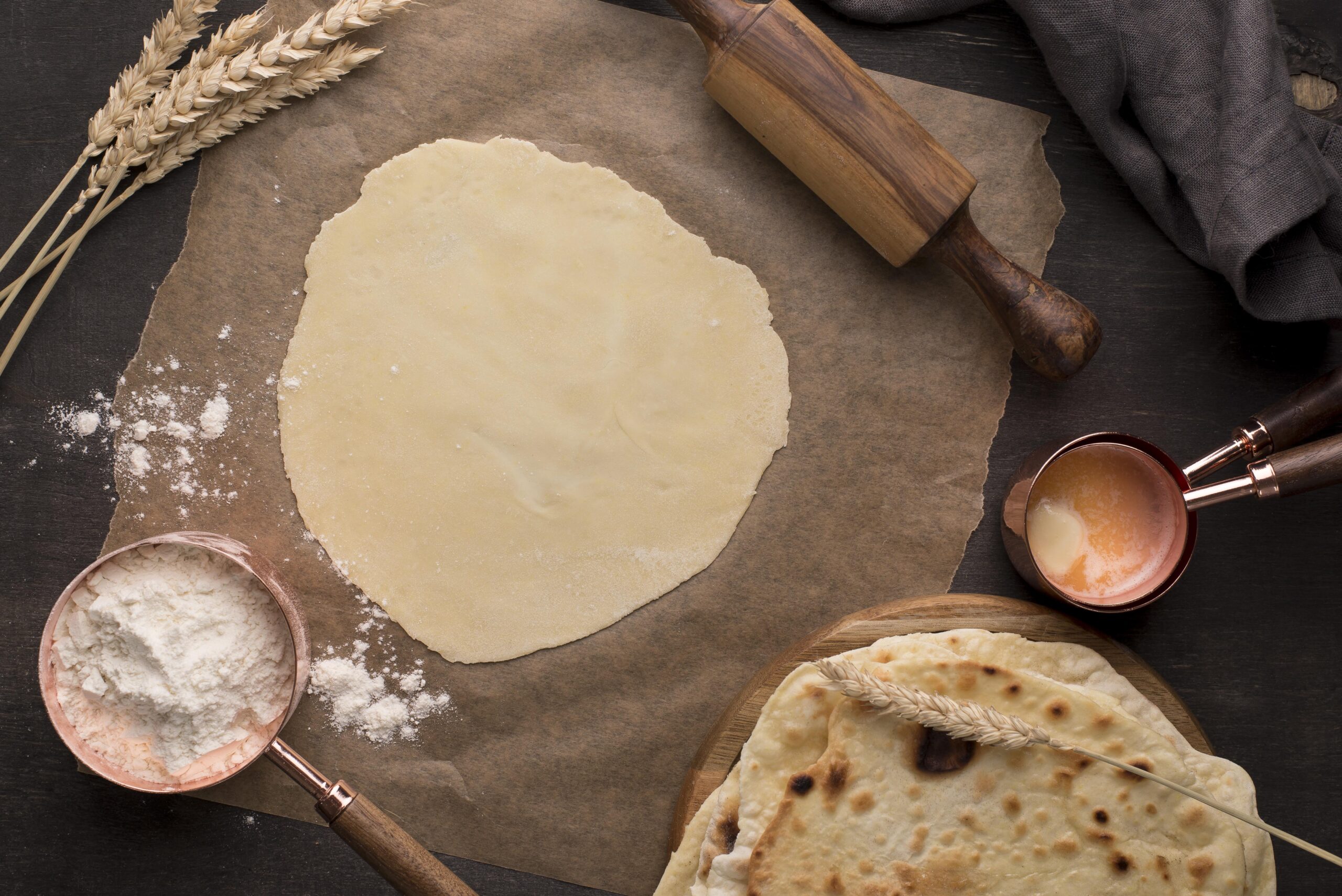Guide to Roti: Making, Benefits, and Comparisons
Table of Contents
- Introduction
- What is Roti?
- Historical Significance of Roti
- How is Roti Made?
- Uses of Roti
- Nutritional Value of Roti
- Comparing Roti with Other Breads
- Roti vs. White Bread
- Roti vs. Brown Bread
- Health Benefits of Eating Roti
- Conclusion: Why You Should Eat Roti
- Message to Embrace Roti in Your Diet
Introduction.
Roti, also known as chapati or poli in Marathi is a basic food in many Indian households. It’s a type of unleavened flatbread made primarily from whole wheat flour. Its effortlessness, flexibility, and dietary value make it a well known choice for individuals over different societies and districts. This blog delves into the details of roti, its preparation, nutritional benefits, and how it compares to other types of bread.
What is Roti?
Roti is an unleavened flatbread made from whole wheat flour and water, sometimes with a pinch of salt or oil. It is a cornerstone of Indian cuisine but is also widely consumed in Pakistan, Nepal, Bangladesh, and other parts of South Asia. The texture of roti is soft and pliable, making it an ideal companion for a variety of dishes.
Historical Significance
The origin of roti dates back thousands of years, with its roots in the Indian subcontinent. It has been a fundamental part of the diet in these regions due to the abundance of wheat and the simplicity of its preparation. Roti is not only a food item but also holds cultural and social significance, often being part of rituals and traditional meals.
How is Roti Made?
Ingredients:
• 2 cups of whole wheat flour (atta)
• 1 cup of water (approximately, adjust as needed)
• A pinch of salt (optional)
• 1 teaspoon of oil (optional)
Instructions:
1. Mixing the Dough: In a large bowl, mix the whole wheat flour and salt (if using). Gradually add water while kneading to form a soft, pliable dough. Add a little oil if you prefer softer roti.
2. Resting the Dough: Cover the dough with a damp cloth and let it rest for at least 15-20 minutes. This helps in gluten development, making the dough easier to roll out.
3. Dividing the Dough: Divide the dough into small, equal-sized balls (about the size of a golf ball).
4. Rolling the Roti: Clean a rolling surface with a small flour. Flatten a dough ball and roll it out into a thin, circular disc, about 6-8 inches in diameter.
5. Cooking the Roti: Heat a tawa or flat skillet over medium-high heat. Place the flat dough on the hot tawa. Cook for approximately 30 seconds or until bubbles begin to form. Cook the other side too. Use tongs to flip again Indian women’s usually use their hands to flip the roti , allowing the roti to puff up. Press gently with a cloth or spatula to help it puff evenly. Remove from heat once lightly browned and cooked through.
Uses
Roti is incredibly versatile and can be used in various ways:
• As a Wrap: It can be used to wrap vegetables, meats, or other fillings for a quick meal.
• With Curries: Typically served with curries, dals, and other savory dishes to scoop up the sauce and ingredients.
• Snacks: It can be cut into pieces, toasted, and enjoyed as a crispy snack with dips.
• Breakfast: Spread with butter, jam, or honey for a simple and nutritious breakfast.
Nutritional Value
Roti, especially roti made from whole wheat flour, is a healthy choice
. Here’s a breakdown of its dietary substance (per 100 grams)
• Calories: 250 kcal
• Carbohydrates: 55 grams
• Protein: 9 grams
• Fat: 2 grams
• Fiber: 12 grams
• Vitamins and minerals: It is rich in B vitamins, iron, magnesium and potassium.
The high fiber content aids in digestion and helps in maintaining blood sugar levels, making it a suitable choice for people with diabetes or those looking to manage their weight.
Comparing it with Other Breads
Roti vs. White Bread
• Ingredients: White bread is typically made from refined wheat flour (maida), water, yeast, and sugar. In contrast, roti is made from whole wheat flour and water, with no yeast or sugar.
• Nutritional Value: Roti has higher fiber content and more nutrients compared to white bread, which loses much of its nutritional value during the refining process.
• Glycaemic Index: Roti has a lower glycaemic index, making it better for blood sugar management.
Roti vs. Brown Bread
• Ingredients: Brown bread is made from whole wheat flour but often contains added sugars, preservatives, and sometimes colouring agents.
• Nutritional Value: Both brown bread and roti are made from whole wheat, but roti is typically fresher and free from additives.
• Processing: Roti is less processed compared to commercially available brown bread, which may contain additional ingredients to enhance shelf life and texture.
Health Benefits of Eating Roti
1. Rich in Fiber: Promotes healthy digestion and prevents constipation.
2. Low Glycemic Index: Helps in maintaining stable blood sugar levels, beneficial for diabetics.
3. Nutrient-Dense: Gives fundamental vitamins and minerals like iron, magnesium, and B-vitamins.
4. Supports Weight Management: The high fiber content helps in feeling full longer, reducing overall calorie intake.
5. Heart Health: Heart health: Whole grains may reduce risk of heart disease.
Conclusion: Why You Should Eat Roti
Incorporating roti into your diet can provide numerous health benefits due to its rich nutritional profile and low glycaemic index. It is a versatile, whole grain option that can complement a variety of dishes and meals, making it an excellent alternative to more processed types of bread.
Message to Embrace Roti in Your Diet
In a world where processed foods are becoming increasingly prevalent, opting for traditional, whole grain options like roti can make a significant difference in your health and well-being. Not only does roti provide essential nutrients and fiber, but it also helps maintain stable blood sugar levels and supports digestive health. By choosing roti over more refined and processed bread, you are making a healthier choice for your body.
Embrace the tradition, taste, and health benefits of roti. Make it a staple in your diet andenjoy the journey towards better health and well-being.
In conclusion, roti is more than just a type of bread; it’s a nutritious, versatile, and culturally significant food that deserves a place in your daily diet. Whether you’re seeking a healthier alternative to white or brown bread, or simply looking to diversify your meals, roti offers a delicious and beneficial option. So, next time you plan your meals, remember to include roti for a wholesome, balanced diet.

